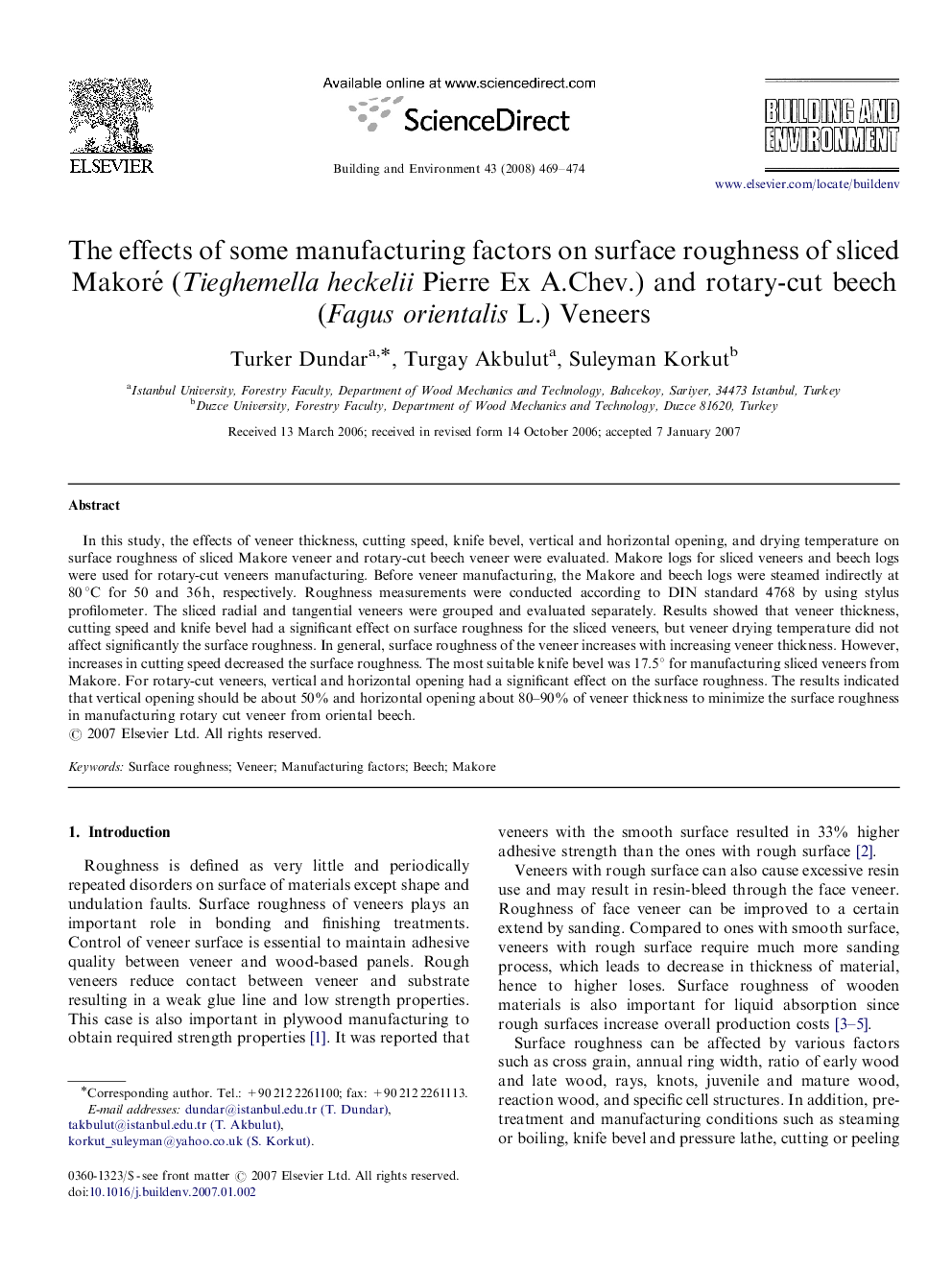| Article ID | Journal | Published Year | Pages | File Type |
|---|---|---|---|---|
| 249892 | Building and Environment | 2008 | 6 Pages |
In this study, the effects of veneer thickness, cutting speed, knife bevel, vertical and horizontal opening, and drying temperature on surface roughness of sliced Makore veneer and rotary-cut beech veneer were evaluated. Makore logs for sliced veneers and beech logs were used for rotary-cut veneers manufacturing. Before veneer manufacturing, the Makore and beech logs were steamed indirectly at 80 °C for 50 and 36 h, respectively. Roughness measurements were conducted according to DIN standard 4768 by using stylus profilometer. The sliced radial and tangential veneers were grouped and evaluated separately. Results showed that veneer thickness, cutting speed and knife bevel had a significant effect on surface roughness for the sliced veneers, but veneer drying temperature did not affect significantly the surface roughness. In general, surface roughness of the veneer increases with increasing veneer thickness. However, increases in cutting speed decreased the surface roughness. The most suitable knife bevel was 17.5° for manufacturing sliced veneers from Makore. For rotary-cut veneers, vertical and horizontal opening had a significant effect on the surface roughness. The results indicated that vertical opening should be about 50% and horizontal opening about 80–90% of veneer thickness to minimize the surface roughness in manufacturing rotary cut veneer from oriental beech.
